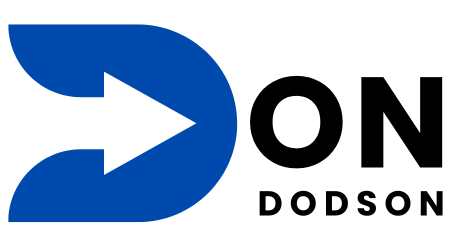The increasing adoption of Agile at an enterprise level has shifted the role of product owners. Now, POs do not just work as backlog managers, but also as strategic leaders, aligning business goals with execution at the team level. Product owners facilitate collaboration across teams, aligning initiatives with value streams, anvaluating whether the ongoing work is well-suited to deliver business value.
Currently, enterprise agility requires product owners to utilize stakeholder management, systems thinking, and technical fluency. This helps them with the ability to scale Agile practices and principles, build a transparent culture, and improve team performance. By helping organizations ensure alignment from strategy to execution, product owners can scale Agile practices and principles, foster a transparent culture, and enhance team performance. Therefore, the role of product owners is more responsible for driving measurable value and a competitive advantage in a sustainable manner.
Traditional Role of Product Owners
In a conventional sense, POs were the tactical executors rather than strategic decision-makers, focusing on providing more value within a single team or project. The coordination of value delivery across different teams and portfolios was not coming under the KRAs of product owners.
Especially in Agile frameworks such as Scrum, POs were more focused on product backlog management and signaling the development teams about the product that needs to be built. In this capacity, product owners served as the connecting medium between stakeholders and the development team. They prioritized work based on business value and customer requirements.
Key responsibilities of traditional product owners include:
- Backlog Management: Building, refining, reaccessing, and prioritizing the product backlog to ensure the KRAs of a development team are met effectively.
- User Story Definition: Scripting detailed and clear user stories with acceptance criteria to help teams comprehend the exact requirements.
- Stakeholder Communication: Liaising between business stakeholders and the development team to deliver requirements and gather necessary feedback.
- Sprint Planning Support: Collaborating with the team during events like sprint planning to clearly present stories and ensure team commitment to the scope.
- Acceptance Testing: Evaluating the work completed and confirming whether it satisfies the agreed-upon acceptance criteria and business expectations.
The New Role of Product Owners in Enterprise Agility
Currently, the roles and responsibilities of POs extend beyond teams, value streams, and portfolios. They require a precise combination of strategic thinking, stakeholder management, and technical proficiency to excel as a product owner in this current era.
Key roles and responsibilities of POs at the current time include:
- Strategic Alignment: Connecting team efforts with business goals and long-term strategy.
- Value Stream Coordination: Encouraging seamless collaboration between Agile teams and release trains to maximize the effective flow of business value.
- Stakeholder Engagement: Maintaining strong relationships between product managers, executives, and other stakeholders to maintain competing priorities.
- Program Increment (PI) Planning: Contributing to PI planning to define key business goals and deliverables across teams.
- Metrics and Outcome Focus: Tracking KPIs and business results to ensure effective value creation.
- Continuous Improvement: Supporting a new-age culture that encourages experimentation, openness, and continuous process refinement for better team growth.
What Are the Drivers for Changing the Role of Product Owners?
Various factors influence the changing role of POs in business agility, as businesses scale Agile beyond individual teams.
Key drivers include:
- Scaling Agile Across Enterprises: As businesses adopt Agile at the portfolio or program level, POs should collaborate with different teams and value streams instead of emphasizing individual backlogs.
- Strategic Business Alignment: Businesses expect POs to embed a regular team execution process that aligns with business objectives and ensures initiatives align with the long-term strategy.
- Increased Stakeholder Complexity: Product owners should partner with various stakeholders, including product managers, executives, and customers, to strike a balance between competing priorities and expectations.
- Focus on Measurable Value: Modern POs are responsible for both outputs and outcomes, which involves evaluating key metrics and KPIs to validate actual business value.
- Cross-Functional Collaboration: Product owners need to work effectively with the design, development, and QA teams to meet the expanded scope.
Future Outlook for Product Owners
The future of product owners is aligned with the continuous adoption and scaling of Agile practices across business settings. For this reason, many professionals are focusing on getting the SAFe Product Owner certification to acquire the skills required for this shift. The future of product owners is shaped by the key trends, such as:
- Enterprise-Wide Leadership: POs will influence enterprise-wide Agile adoption by connecting business strategy and delivery.
- Data-Driven Decision Making: The decisions of Future POs will be based on real-time data, metrics, and customer insights.
- Enhanced Stakeholder Engagement: Building stronger partnerships with executives, product managers, and cross-functional teams will become a more strategic approach.
- Focus on Outcome over Output: Organizations will prioritize measuring success based on the tangible value they provide to the business.
- Technical Acumen and Systems Thinking: POs should develop technical proficiency to manage systems and cutting-edge tools.
Conclusion
Enterprise agility in current times demands that product managers look ahead of backlog management. They should work as strategic leaders, connecting business objectives with on-the-ground execution. Therefore, to excel in this capacity, POs should enhance their skills related to strategy alignment, stakeholder management, and leadership. This is where investing in structured certification programs allows POs to learn these critical competencies and stay current in the fast-changing market.











